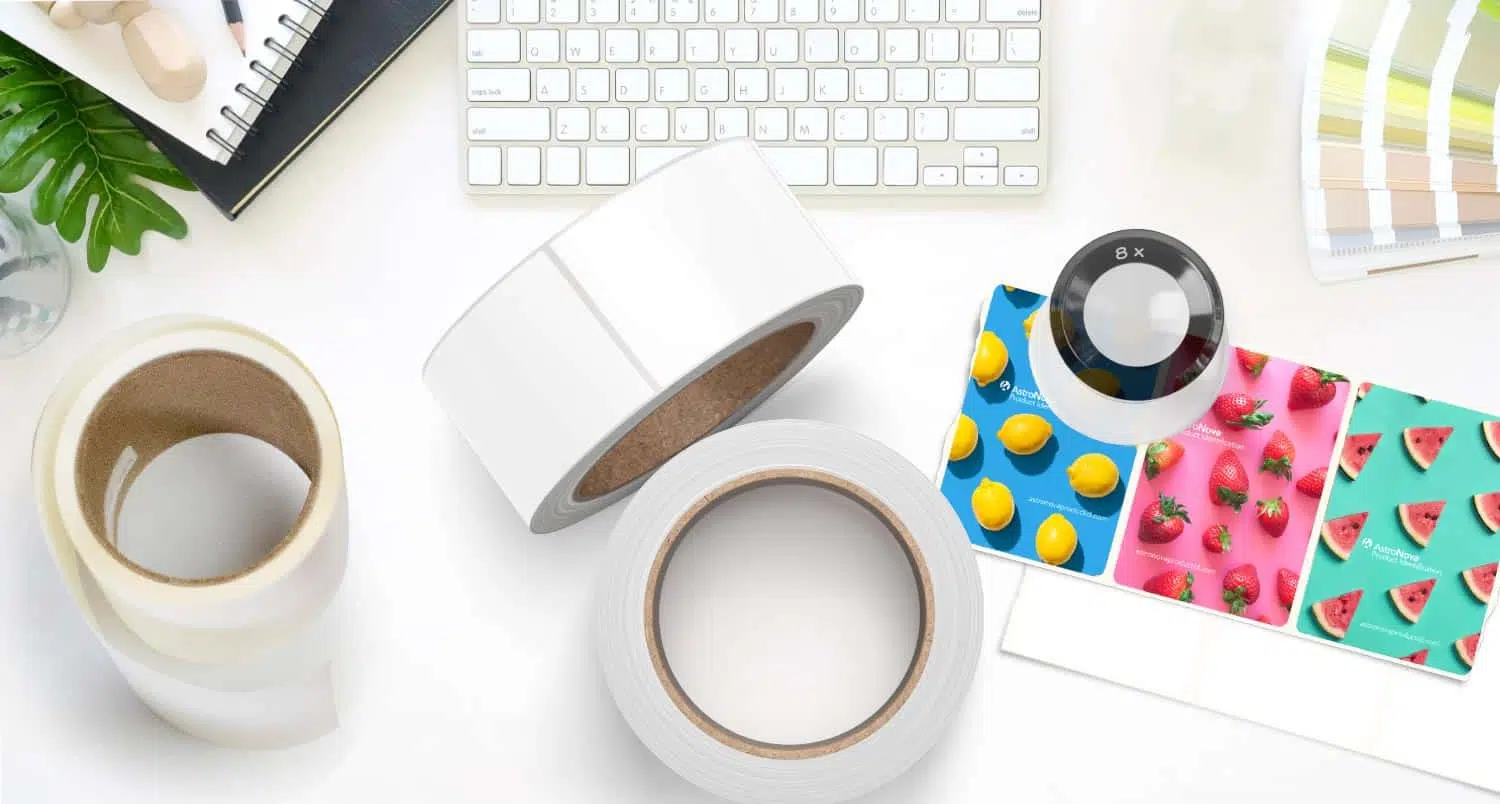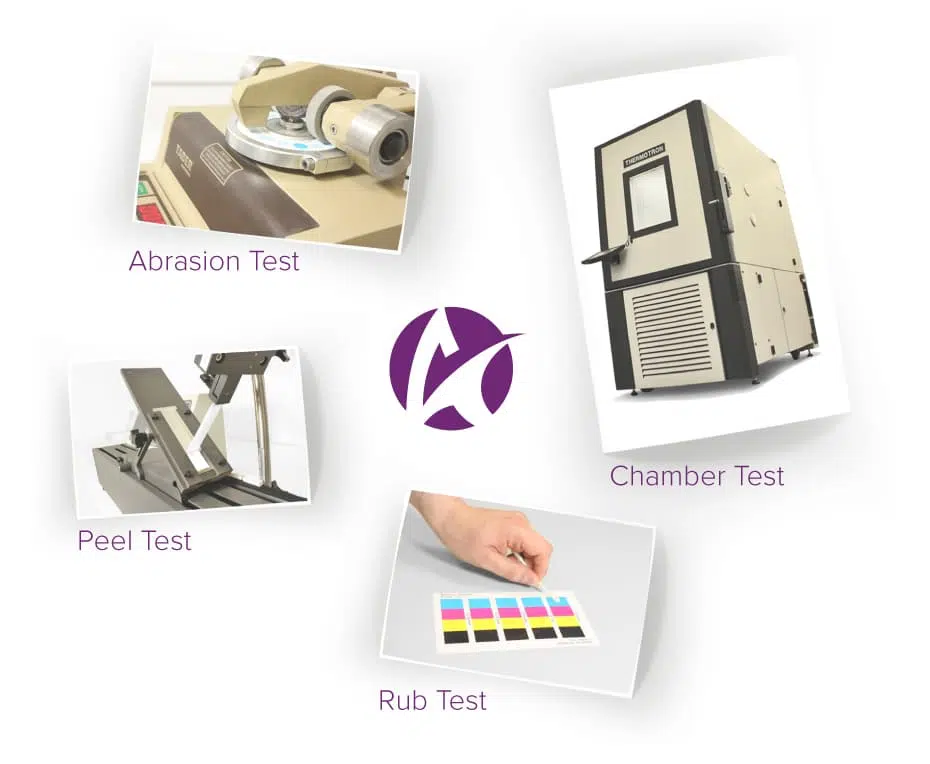
The world of labeling offers a wealth of options ranging from various substrates, finishes, shapes, sizes, and more. So, how do you ensure the material you choose is the best option for your labeling needs?
For starters, you want a material that’s suitable for your application – if you’re looking for superior durability, resistance to certain elements, or extra-strength adhesion, you want to find a material that meets these specific needs and, has been properly tested and qualified to meet these expectations.
Labeling Testing and Standards
A quick overview of the label testing process and all it should entail when looking at quality assured labels:
- Peel Adhesion — Using an Adhesion/Release Tester, the Peel Adhesion test is used to measure the ability of the adhesive to stick to a variety of substrates including stainless steel, glass, high-density polyethylene (HDPE), low-density polyethylene (LDPE), polystyrene, polypropylene (PP), and polyvinyl chloride (PVC), and corrugated cardboard.
- Taber Abrasion — The Taber Abrasion test is used to determine the amount of a printed image removed due to abrasive forces applied directly to the surface.
- Chemical Resistance — Chemical Resistance testing is done to test both the chemical resistance of a material and chemical resistance of an ink/toner/thermal transfer ribbon. The standard chemicals tested include water, Formula 409, WD-40, non-acetone nail polish remover, and isopropyl alcohol. To report results, the number of strokes the material can handle before failure is counted. This number is recorded and compared to the acceptable limit based on the intended application/end-use for the material.
- UV Fade — The UV Fade test measures the colorfastness of a material or ink/coating to light. Samples are exposed to continuous light and removed after 100, 500, and 1000 hours. When all samples have completed the testing process, delta E’s are measured between the control and each sample.
- Environmental UV Chambers — Environmental chambers allow for temperature and relative humidity to be set, for various liquids to be sprayed onto the label surface in regular intervals, and for varying amounts and types of UV light to come in contact with the label surface, ultimately simulating various storage and real-life conditions and ensuring the highest quality end product.
Finding a Trusted Source
Once you’ve narrowed down possible suppliers for your label materials and understand the behind-the-scenes testing process for qualifying materials, how do you select a dependable, reliable source?
Look no further than GetLabels. At GetLabels, we test every paper, synthetic label, film, tag, ink, and toner at our Materials Research Lab to measure adhesion strength and resistance to moisture, chemical solvents, abrasion, and UV light, as outlined above, ensuring we deliver a high-quality final product. Following documented quality procedures by ISO standards, our quality assurance engineers follow our products from raw material to their completed state.

We test every paper, synthetic label, film, tag, ink, and toner at our Materials Research Lab to measure adhesion strength and resistance to moisture, chemical solvents, abrasion, and UV light.
In addition to the in-depth testing process all the materials are exposed to, GetLabels offers the widest range of label materials and adhesives, including customizable die-cut labels compatible with all major printer brands.
Experts in Label Development
Receive samples of your labels printed and see for yourself.
Still feel overwhelmed with the library of options available to you? Not sure where to start or which material is truly the best fit for your labeling needs?
At GetLabels, we work with you to recommend the materials best suited for your product and are happy to source and test new raw materials to meet all your end-use requirements.
We work with you to recommend the materials best suited for your product
Contact one of our Media Specialists to schedule a free media consultation and receive printed samples of your labels.


